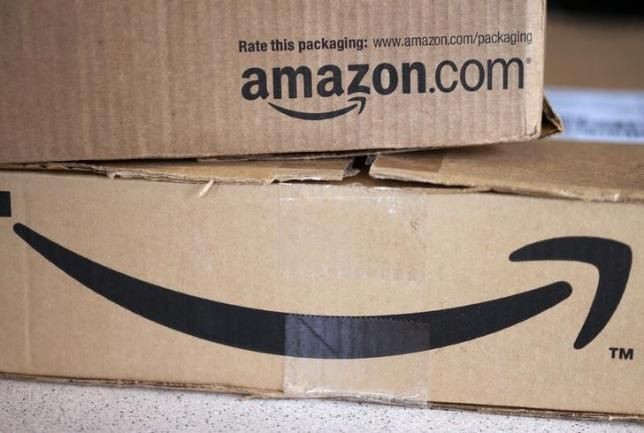Can Amazon Build A Successful Grocery Chain?

Amazon.com (NASDAQ:AMZN) has signed leases on more than a dozen grocery store locations in the Los Angeles area and plans to also open locations in Chicago and Philadelphia, according to The Wall Street Journal. It's a move that makes sense when you consider that the online retailer can use brick-and-mortar locations to also serve as delivery hubs.
The online giant has not commented publicly on its overall physical store plan -- whether for full-size grocery locations, bookstores, its cashier-free Go brand, or other formats in its portfolio. Most of these new leases, The Journal's Esther Fung reported, are "outside urban cores and cater to middle-income consumers."
That's a core customer for Amazon who would perhaps not be the target for the chain's more upscale Whole Foods brand. Amazon, it should also be noted, closed that grocery chain's lower-price/fewer-frills 365 stores early this year.
Does this make sense for Amazon?
Amazon can find multiple uses for its brick-and-mortar locations. Grocery stores can function as, well, stores -- as well as staging points for one-day and same-day delivery. Stores can also take returns and allow people to pick up orders they don't want delivered to their homes.
It also makes sense for Amazon to pursue creating a grocery brand that's more in line with its overall pricing ethos. Whole Foods generally sells premium items at premium prices. Adding those customers helps the online retailer grow its customer base, but it may not expand its business with many of its Prime members.
A new grocery chain aimed at offering low prices could leverage the company's strong pricing power while also enhancing its digital operations. Building stores isn't cheap, but Amazon has picked a smart time to do it as the real estate market is full of available locations from big-box chains that have shrunk or gone out of business.
Amazon can be everywhere
If Amazon wants to effectively offer one-day delivery, it needs brick-and-mortar locations in as many places as possible. It makes sense to make many of those locations function as stores that can produce revenue to offset the cost of running them.
In many ways, Amazon is in the shipping and logistics business as much as it's a retailer. Having a much larger physical footprint means the company won't have to spend as much to ship its goods. In theory, these locations could also leverage other company-owned models. Perhaps one will have a cashier-free grab-and-go section while another might contain a bookstore-within-a-store.
Adding a moderately priced grocery chain simply fleshes out the Amazon portfolio. Adding this format also makes it possible for the online retail giant to crowd out some of its rivals and become a singular option for its customers.
This should grow the amount that Amazon's best customers and Prime members spend. That's very good for the company and, along with all the other benefits that more physical locations give the company, makes this a very smart move with a clear payoff.
This article originally appeared in the Motley Fool.
John Mackey, CEO of Whole Foods Market, an Amazon subsidiary, is a member of The Motley Fool's board of directors. Daniel B. Kline has no position in any of the stocks mentioned. The Motley Fool owns shares of and recommends Amazon. The Motley Fool has a disclosure policy.





















